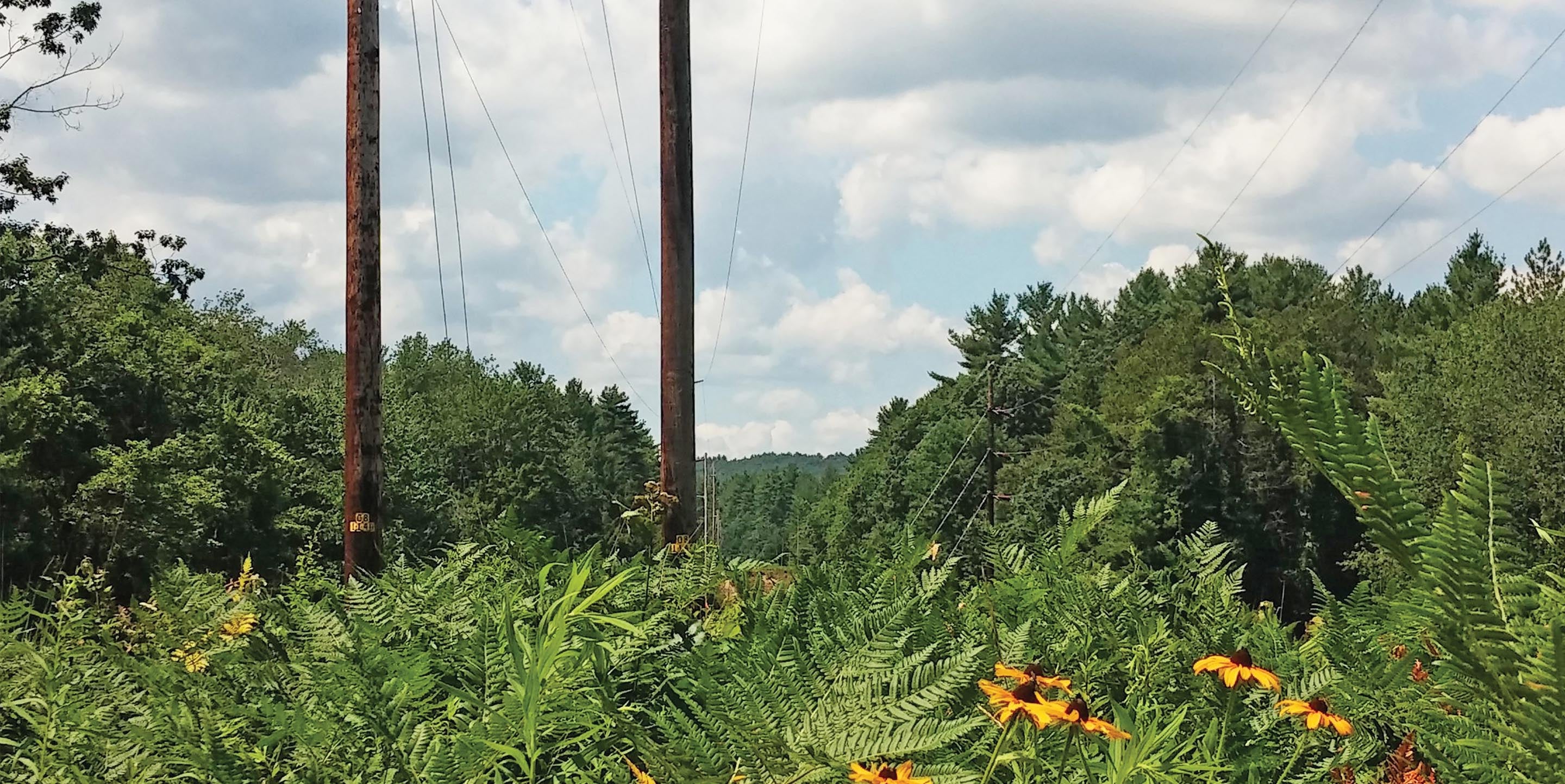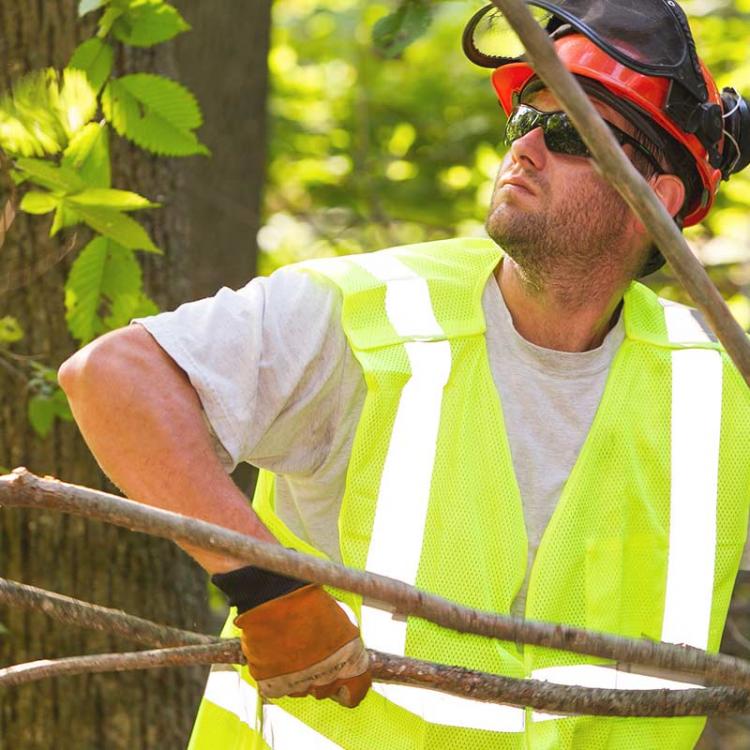
Our goal at Unitil is to find a balance between reliable electric service and being good environmental stewards. Integrated Vegetation Management is finding that balance by using multiple control methods to maintain the appropriate clearances from our lines, while also promoting low-growing, native vegetation within our Rights-of-Way."
Main initiative details
The choice of control methods is based on the anticipated effectiveness, environmental impact, site characteristics, safety, security, economics and other factors. Control methods consist of mechanical, such as mowing or hand-cutting, as well as cultural, biological and chemical. In electric utility vegetation management, the plants to be controlled are primarily tall growing trees that can grow into or fall onto electric lines.
Overgrown vegetation in our transmission rights-of-way can pose safety hazards and cause avoidable power outages. To minimize the potential for these outages, cost-effective and environmentally sensitive chemical control methods using herbicides may be used. Herbicide application allows us to keep power lines clear of tall growing undesirable plants while maintaining low growing desirable vegetation. This practice has been known to increase biodiversity on rights-of-ways when compared to mowing alone. It allows for low growing native vegetation to flourish, providing for wildlife habitat and food. It also allows us to control non-native invasive species while protecting native low-growing vegetation. These herbicides are some of the same products you may use to control vegetation around your home.
Ensuring that vegetation does not encroach on the power lines, while protecting our environment, is a priority at Unitil. That’s why we continually research the best technologies and techniques. Trained and professional maintenance crews selectively apply product in a controlled low-dose to manage plant growth in a safe and environmentally friendly manner. All products used by Unitil are approved by the Environmental Protection Agency and appropriate state agencies. If you have concerns or would like more information about Unitil’s herbicide program, contact us at 1-888-301-7700.
We also encourage adjacent landowners to make use of the green spaces along the rights-of-way by mowing, animal browsing/grazing, or maintaining other low-growing vegetation. An agreement with Unitil is required, and activity on the rights-of-way cannot include structures or alteration of terrain. Emergency access by Unitil may occur. Interested landowners can apply by sending a request to forestry@unitil.com.

Pollinator Plots
Unitil strives to work with landowners to promote areas for pollinators to thrive in our rights-of-way. This is done using a variety of IVM prescriptions that promote native low-growing shrubs and flowers to help support native bee, butterfly, and animal populations. With landowner support, we use a combination of methods, including seeding techniques, mechanical removal, and herbicide to promote site-specific goals. Unitil's aim with these projects is for a more diverse and sustainable ecology within our rights-of-ways.
Massachusetts Five-Year Vegetation Management Plan (VMP)
The VMP outlines the company’s five-year managing vegetation on utility rights-of-way in compliance with MA 333 CMR 11.00, and all applicable state regulations pertinent to the management of utility rights-of-way. The company’s VMP is based on integrated vegetation management (IVM) principles and practices.
A hard copy of the VMP and YOP can be provided upon request to forestry@unitil.com.



